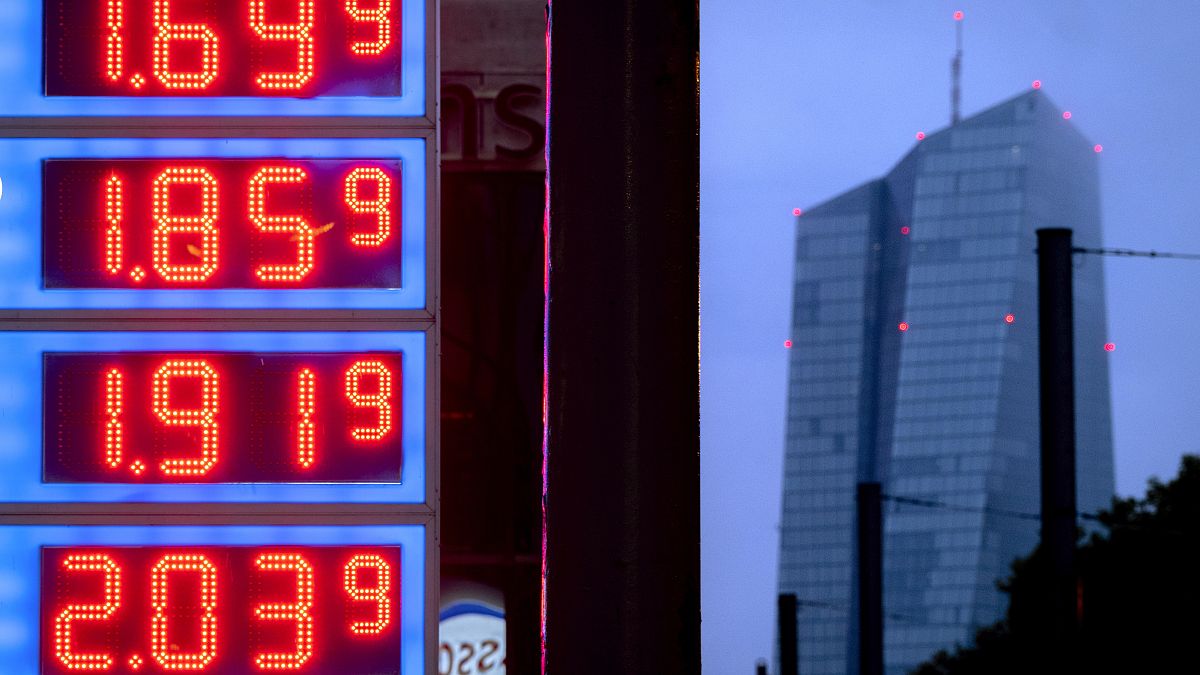Euro area inflation fell in line with market estimates in November as energy prices fell. Euronews Business breaks down the latest economic data impacting the eurozone economy.
Year-on-year euro area inflation print for November came in on Tuesday, clocking in at 2.4%. This was in line with analyst expectations and was quite a step down from October’s 2.9%, while also being the lowest in 16 months.
This was mainly due to falling energy prices, which were down 11.5% from October’s 11.2%. Alcohol, food and tobacco prices rose 6.9% in November, down from 7.4% in the last month. Services prices also inched up more slowly, at 4%, down from 4.6% the previous month. Non-energy industrial goods also climbed 2.9%, from 3.5% in October.
The final estimate for the year-on-year core inflation, which does not take into account food, energy, tobacco and alcohol prices, came in at 3.6%. This was the lowest since April 2022.
Belgium saw the lowest annual inflation rate, at -0.8%, followed by Denmark at 0.3% and Italy at 0.6%. Czech Republic, on the other hand, saw the highest inflation at 8%, followed by Hungary at 7.7% and Romania and Slovakia, both at 6.9%. Year-on-year inflation dropped in 21 of the EU’s member states, while increasing in three and remaining the same in three more.
Potential upside risks to inflation in 2024
However, ECB President Christine Lagarde warned against investors rejoicing too soon, cautioning that inflation could very well spike again in December. This could likely be due to colder weather setting in and energy demand and prices going up as a result.
This could mean that inflation falls less than expected in the next year, if energy prices keep rising once more. As a result, the interest rate cuts so eagerly awaited by investors may have to be delayed a little more. Several of the energy price cap measures implemented by the European Central Bank are also going to be lifted in 2024, further contributing to this upward movement of prices.
ECB keeps rates stable in last meeting of the year
At its last monetary policy meeting of 2023 on the 14 December, the ECB chose to keep interest rates stable at 4.5%, as expected. However, most of the central bankers highlighted that it did not seem as if further rate hikes would be necessary to bring inflation under control.
However, Lagarde mentioned that the board “did not discuss rate cuts at all”, so for the moment, it looks like the ECB may be keen on maintaining interest rates at their current level.
The ECB also estimates that inflation will clock in somewhere around 5.4% in 2023, a step down from its September forecast of 5.6%. Inflation in 2024 is also likely to come in at 2.7%, down from 3.2% previously expected.
However, falling productivity, robust wage growth, weather occurrences and escalating geopolitical tensions in the Middle East are all likely to have an impact on inflation, in the short-term at least.
Therefore, Lagarde’s previous warning of a spike in inflation in December 2023 and early 2024 cannot completely be ignored.



